Nederlands
English
Deutsch
Français
Surinamese fish varieties are not only popular in the Caribbean. There is also a large Surinamese and African community that live in Europe.
This article will tell you more about the most popular Surinamese fish varieties.
In addition to frozen and unprocessed fish, Surinamese dried and smoked fish is also covered in detail.
Topics covered in this article include:
Suriname is located in South America and borders the Atlantic Ocean. The country is 90% forested; the important and fertile Amazon basin covers a large part of Suriname. The Atlantic Ocean is easily accessible for Surinamese fisherfolk via the important Suriname River.

Suriname has a relatively large fishing industry due to its strategic location. Naturally, much of this fish is exported within the region, but Europe is also an important market. The many fish varieties are especially popular among Surinamese and African communities.
As Western Europe and especially the Netherlands have a large Surinamese/African community, Surinamese fish varieties are widely sold here. Below, we list the most popular raw and frozen Surinamese fish varieties for you.

The Whitemouth Croaker or Meagre fish is a popular fish species in many parts of the world. Although Whitemouth Croaker is the correct name for this scientific species, due to its yellow colour, it is often referred to as Yellow Croaker. While conducting trades, everyone refers to the fish as a Yellow Croaker, which is why we also use this name.
Almost all ethnic groups eat this fish on a weekly basis, but it is less well-known in Western Europe. When served whole, the fish has a golden colour. When steamed, the Yellow Croaker is a sight to behold. The fish all have indigenous names due to Suriname being a mix of African, Chinese and Creole cultures. There, Yellow Croaker is also called Zeekoebie, Malua and Wong Fa Yu.
Check out our Whitemouth Croaker or Meagre fish products
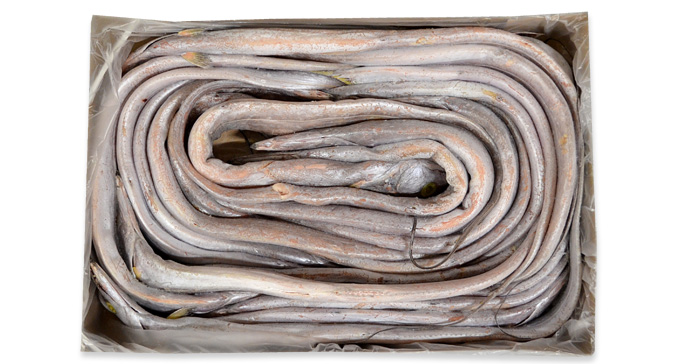
The Ribbonfish, beltfish or Largehead hairtail derives its name from its flat elongated shape. The fish looks like a flat conger eel or a swimming belt. It must be an old species because it is caught worldwide. This fish is steamed in slices, and almost all ethnic groups consider it a delicacy. It is known as Tai Yu among the Chinese.
Check out our Beltfish or Largehead hairtail products
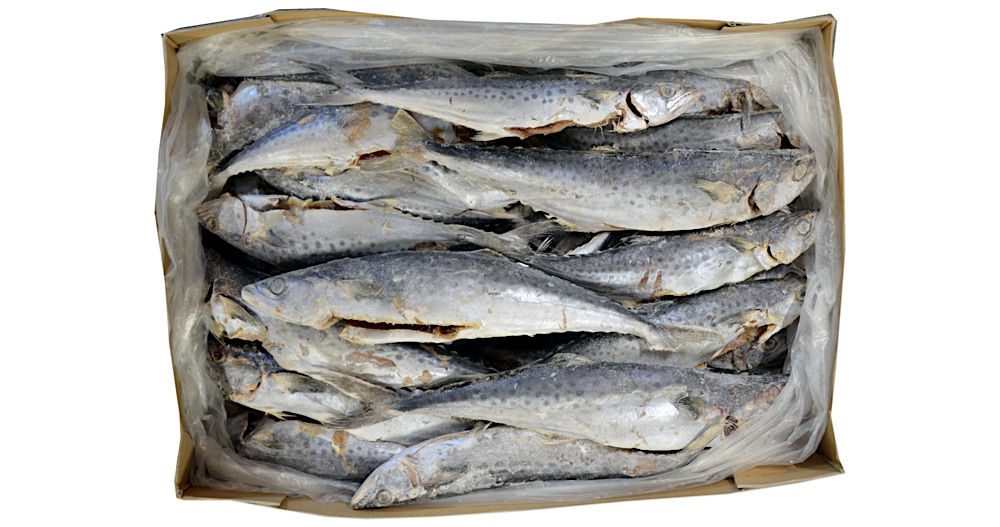
Kingfish (also called Koningsmakreel in Dutch, meaning king mackerel) is especially loved by the Indian Tamil community. They know the fish as ‘Aracula’. The Dutch name says it all: it is a mackerel-like fish, and the flavour is thus a hit with mackerel lovers! The most famous way to serve it is as steamed chunks.
Check out our Kingfish or King mackerel products

Kandra Tiki (also called Green weakfish) is a Surinamese whitefish with firm flesh, great for barbecuing. Africans often compare it to the ‘Capitaine’ or ‘Bar’ fish known to them and caught in the coastal waters of Africa. However, these names are widely used for many species of fish sold at the market because it is commercially attractive. After almost 25 years of distributing this fish in Europe, the local name Kandra Tiki has now become familiar enough for people to use.
Check out our Kandra Tiki or Green weakfish products
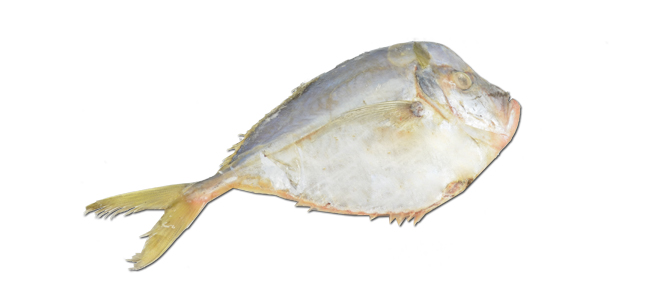
Caribbean pomfret (also called Atlantic moonfish) belongs to the horse mackerel species and has a distinctive head. The fish is also called ‘horsehead’ or ‘horsefish’ because of its depressed, elongated forehead. The name ‘Caribbean Pomfret’ is a name that does not actually belong to the fish. Locals gave it this name because they often caught the fish together with the ‘American harvestfish’, which is very similar to the Indonesian Pomfret species. That is why the Caribbean pomfret is so popular among Asians as well.
Check out our Caribbean pomfret or Atlantic moonfish products
Apart from the raw frozen Surinamese fish, the smoked and dried varieties of Surinamese fish are even more popular in Europe.
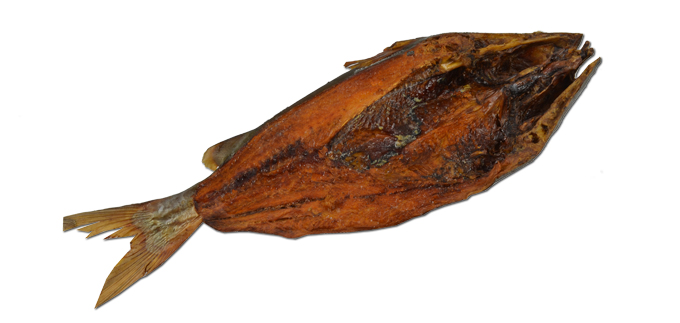
The Koepila is one of the common sea catfish in Suriname. This fish species is characterised by its wide mouth with whiskers, which is why the English call it ‘Catfish’. The Koepila is the bigger brother of the ‘Poes’ and the ‘Kodokoe’, beautiful names still used as trade names. These sea cats are often dried according to traditional methods at high temperatures and smoked, after which they end up as shredded fish on various dishes (see also Skilled Fish).
Check out our Koepila products
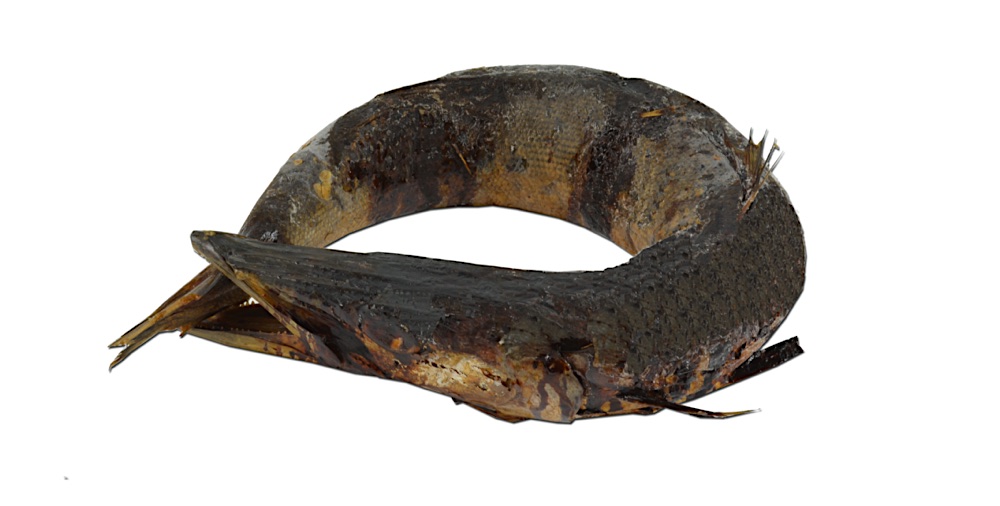
The Barracuda is a natural predator high up in the food chain. This fish has rows of very sharp teeth with which it can grip its prey effectively. The Caribbean Barracuda is slightly smaller than the Indian Ocean variety, making it more suitable for ‘ringing‘.
The Barracuda’s sharp teeth make it easy to tie the fish’s tail in its mouth. This way, you can conveniently hang the Barracuda rings over a fire to dry and smoke them traditionally. In Europe, this traditional smoking method has been imitated as closely as possible so that the product can also be safely marketed on a larger scale.
Check out our Baracuda products
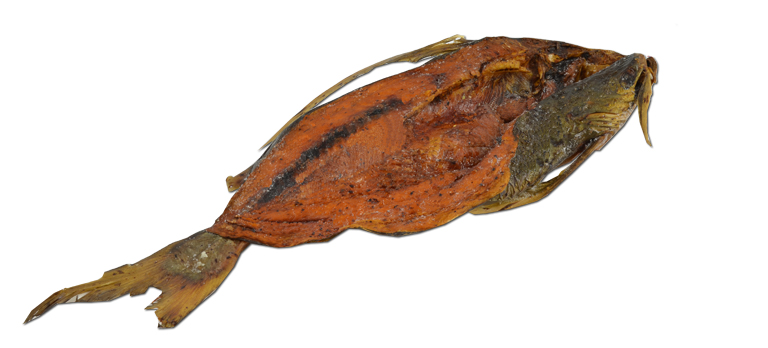
You can recognise the Barbaman or ‘Coco sea catfish’ by its long whiskers. This species of catfish is somewhat smaller than the Koepila and can therefore be tied into a ring more easily. Like the Baracuda, the Barbaman is traditionally prepared as a smoked and dried delicacy. This fish is known as ‘Malangua’ among Africans.
Check out our Barbaman products
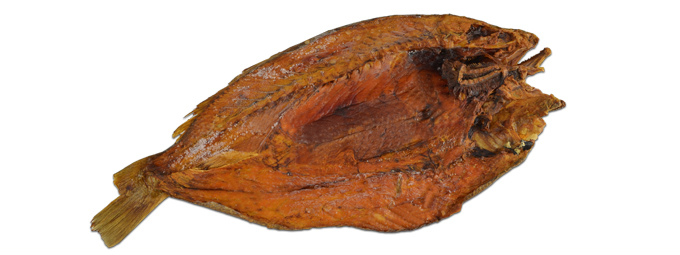
Wit Witti or ‘Jamaica weakfish’ is related to the Kandra Tiki. The name of the Caribbean island of Jamaica already indicates that the fish is very well-known and popular in this area. This species is also commercially important in Brazil. The fish is only sold dried and smoked on the European market. However, this fish cannot be ringed.
Check out our Wit Wittie products
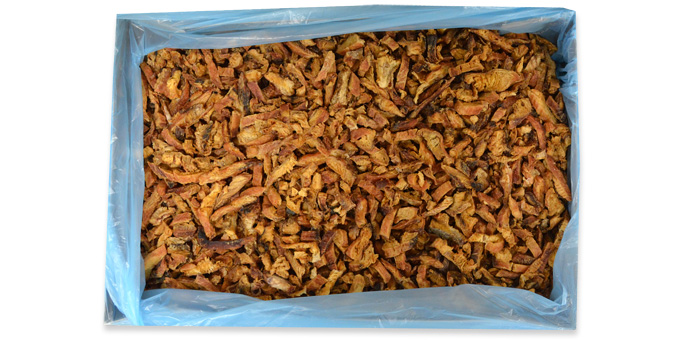
These Surinamese sea catfish are ‘smooth fish’, meaning they have no scales on their skin. As scales are not suitable for consumption anyway, these fish are popular because de-scaling is a time-consuming job. Most sea catfish species are smoked and dried according to the age-old African tradition; the high temperatures and loss of moisture ensure a long shelf life of the fish meat, and it also has a nice smoky flavour.
The dried fish meat is then picked, creating small pieces that the Caribbeans call Skilled Fish, probably a bastardisation of the Dutch ‘geschilde vis’. This is an excellent way for the younger generation, who prefer ready-made meals, to continue enjoying the flavours they have known for a very long time.
Check out our Skilled Fish products
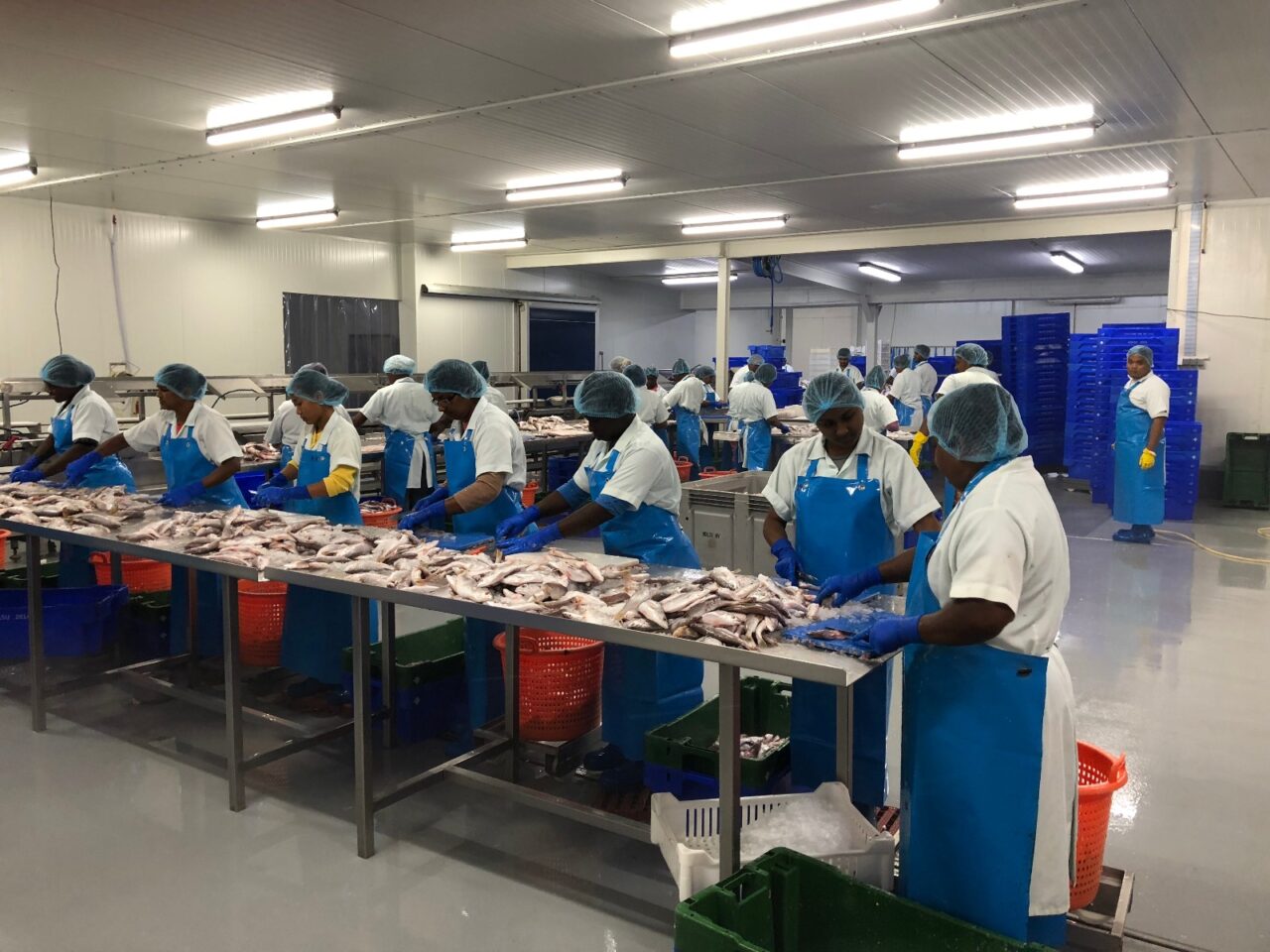
Mooijer-Volendam has its own location in Suriname, named HOLSU. HOLSU owns a fleet of 6 vessels and a modern processing plant and produces the highest quality Surinamese fish every day.
As a Surinamese wholesaler, Mooijer-Volendam sets the highest standards for its quality. Therefore, more and more customers find their way to us for Surinamese fish.